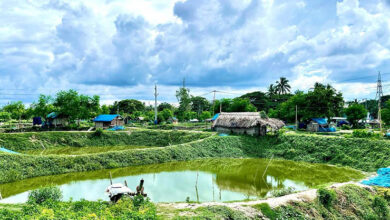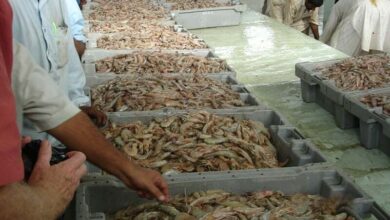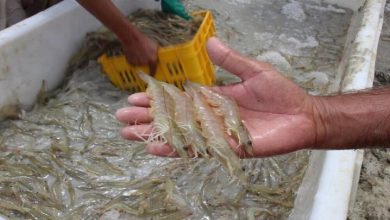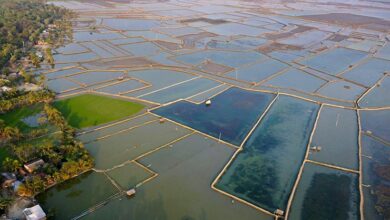
In 2022, Indian aquaculture market reached 12.4 million tons. According to IMARC Group, the market is expected to reach 19.9 million tons by 2028, with a compound annual growth rate of 8.1% during 2023-2028. Among the factors driving market growth are rising sea temperatures and unpredictable climatic conditions, as well as the growth of cold storage facilities and modernized fishing harbors.
Furthermore, several key players are introducing innovative solutions for domesticating and culturing ornamental fish species for commercial and recreational purposes in artificial environments, which is enhancing market growth. Additionally, Indian market is anticipated to grow as sustainable aquaculture systems are introduced, which aim to protect ecosystems and biodiversity while reducing pollution.
Aquaculture Market Overview:
| Report Attribute | Key Statistics |
| Base Year | 2022 |
| Forecast Years | 2023-2028 |
| Historical Years | 2017-2022 |
| Market Size in 2022 | 12.4 Million Tons |
| Market Forecast in 2028 | 19.9 Million Tons |
| Market Growth Rate 2023-2028 | 8.1% |
Shrimp Market Overview:
| Report Attribute | Key Statistics |
| Base Year | 2022 |
| Forecast Years | 2023-2028 |
| Historical Years | 2017-2022 |
| Market Size in 2022 | US$ 1.5 Billion |
| Market Forecast in 2028 | US$ 4.3 Billion |
| Market Growth Rate 2023-2028 | 18.8% |
| Dominated Species | L. Vannamei, Penaeus Monodon, M. rogenbergii |
| End Use | Hotels and Restaurants Retail Shops Hypermarkets and Supermarkets Online Sales Others |
| End Form | Frozen Fresh Canned |
| Top Producing States | Andhra Pradesh West Bengal Gujarat Tamil Nadu (Including Pondicherry) Odissa, Maharashtra, Karnataka, Kerala Others |
Indian Aquaculture Market Trends/Drivers:
- Growing Demand for Protein-Rich Food Sources
Over the past few decades, India’s vast population has undergone a transformation in their dietary habits. A prominent shift toward protein-rich food sources has occurred with the rise of disposable income, urbanization, and increased health awareness. In particular, fish is an excellent source of omega-3 fatty acids, vitamins, and minerals. As people recognize the nutritional benefits of seafood, the demand for it has increased.
- Technological Advancements in Farming Practices
India’s aquaculture sector benefits from the adoption of modern and technologically advanced farming practices. Additionally, hatchery technology, feeding systems, and water quality management innovations have optimized fish yields and reduced production cycles. Moreover, advanced pond liners and disease management solutions have enhanced the efficiency of fish farms.
Top Producing States
- Finfish & Shellfish
North East India, with its rich biodiversity, provides a fertile environment for the development of innovative aquaculture practices. A number of schemes and programs have also been introduced by the government in order to boost the aquaculture industry in this region. Through these initiatives, financial support, training, and technological advances have been provided, encouraging more participation. Furthermore, the North East Region is naturally suited to aquaculture due to its abundance of rivers and ponds.
Top producing states are-
- Andhra Pradesh
- West Bengal
- Uttar Pradesh
- Maharashtra
- North East Region
- Others
- Shrimp:
Among all the Andhra Pradesh, West Bengal, Gujarat, Tamil Nadu (including Pondicherry), Orissa, Maharashtra, Karnataka, Kerala, and Others dominate. According to the report, Andhra Pradesh was the largest market for India’s aquaculture market.
Dominated Species
- Finfish
There are several prominent carp species found in Indian major carps (IMC), such as catla, rohu, and mrigal. Across different regions, these species are widely accepted as part of Indian culinary tradition. Due to their climatic adaptability, IMC are easier to cultivate and manage in Indian conditions. In addition to supporting the livelihoods of numerous small and medium-scale farmers, IMC farming contributes to rural employment and economic development, thus gaining prominence in different parts of the country.
In contrast, exotic carp have been introduced to Indian aquaculture, such as common carp and grass carp. It is common for exotic carp to be cultivated using advanced technologies and innovative practices, which results in improved efficiency and productivity. As well, it serves a variety of market segments, including niche and premium markets, both domestically and internationally, which contributes significantly to the overall market.
- Indian Major Carps
- Exotic Carps
- Pangasius
- Clarias
- Anabas
- Rupchanda
- Tilapia
- Seabass
- Others
2. Shrimp
There is also a detailed breakdown and analysis of the market based on species in the report. This includes L. Vannamei, Penaeus Monodon, and M. rogenbergii / Scampi. According to the report, L. vannamei represented the largest segment.
There has been notable growth and demand for L. vannamei species in the Indian aquaculture industry. Their rapid growth, high survival rates, and resistance to diseases make them a desirable choice for farmers, contributing to their rise.
- L. Vannamei
- Penaeus Monodon
- Macrobarchiam rogenbergii
There are numerous health benefits associated with fish, which is one of the key factors driving the market’s growth. Furthermore, consumer preferences for protein-rich diets, including fish, shrimp, and mollusks, are shifting away from high-calorie meat products. The Government of India is also undertaking a number of initiatives, such as Pradhan Mantri Matsya Sampada Yojana, to establish a comprehensive framework and reduce infrastructure gaps in the fisheries sector. Combined with the rapid growth of hatcheries, feed mills, and processing plants, the aquaculture market is booming.
Jaber Bin Abdul Bari
Department of Oceanography, NSTU




